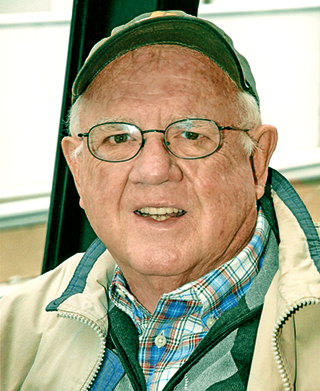.png)
Horse racing holds its three traditional “Triple Crown” races over a 5-week schedule each May through June. It starts with the Kentucky Derby in Kentucky, moves to the Preakness Stakes in Maryland and wraps up with the Belmont Stakes in New York.
We’re borrowing this horse racing jargon for three all-important no-till events in 2022. Our “Triple Crown of No-Tillage” consists of three milestone anniversaries during the coming year:
- First is the 60th anniversary of when the first commercial no-till field was no-tilled in 1962 in southwestern Kentucky, a field I’ve personally visited several times over the past 50 years.
- The second is the 50th anniversary of No-Till Farmer that published its first issue in November of 1972.
- The third recognizes the 30th anniversary of the National No-Tillage Conference, which is being held in January of 2022 in Kentucky, the state where no-till got its on-farm start in 1962.
Same Job for 50 Years
Unlike most folks in the business world who move “up” over the years, I’m proud to say I’ve held the same job of writing, editing and producing No-Till Farmer since 1972. I’ve had the pleasure of reporting on hundreds of significant changes in no-till since those early days 50 years ago, along with the latest ideas on strip-till, ridge-till, vertical-till, intercropping, interseeding, cover crops and many other important aspects of the zero-tillage movement.
In fact, many of my best days have been spent visiting with no-tillers across the country. I can’t think of anything else a writer and editor could ever hope for than helping make an impact on their audience’s lives as I’ve been blessed to do over the past 5 decades.
Over the years, growers and educators have told us that our publications, events and other educational content have provided an authoritative forum for in-depth knowledge about no-till.
We’re told our work has given our subscribers and attendees the tools to farm more efficiently, while also helping to improve soil quality, boost income, curb erosion, become more sustainable and protect the environment for future generations.
Our staff is certainly proud of the role we’ve played in sharing best practices over the years in expanding the no-till movement both here in the states and around the world. Our formula has been to listen to what no-tillers tell us they want and need, find those “doing it” and then delivering this content to help growers succeed in today’s ever-changing ag world.
Like with farming, folks in the ag information business must be ready — and eager — to change according to the dynamics developing around us.
Long-term readers of No-Till Farmer have witnessed several magazine and newsletter developments and innovations from us over the years. Today’s subscribers gain access to numerous website/digital offerings and recordings, several events, eight monthly newsletters and four No-Till Farmer magazines that deliver timely, unbiased no-till information 12 times a year.
Will No-Till Catch On?
When no-till got its start 60 years ago, nobody was convinced it would revolutionize agriculture here in the states and around the world. And its outlook was still unknown a decade later when we started No-Till Farmer. From my ringside seat to the development of no-till, it’s been amazing to see the U.S. no-till acreage grow from 3.3 million acres in 1972 to an estimated 110 million acres in the coming year.
As I’ve learned firsthand over the years, no-tillers are among the most innovative farmers and willing to try new, yet-to-be-proven ideas to become more efficient and sustainable. Their willingness to share their personal experiences with other farmers and admit their mistakes so others don’t make the same costly goofs has spurred no-till’s adoption.
Thanks for inviting me and No-Till Farmer into your home for the last half-century and for spending your time to learn about a reduced tillage practice that is still revolutionizing farming around the world.
Just as important as what we’ve learned about no-till over the past 50 years is what the future holds for no-till and its all-important role in the future of global agriculture. Hold on to your hat as the best of no-till is yet to come.
In the meantime, I hope you enjoy the no-till history we’ve assembled for you in this special keepsake edition.
The 2024 No-Till History Series is supported by Calmer Corn Heads. For more historical content, including video and multimedia, visit No-TillFarmer.com/HistorySeries.






